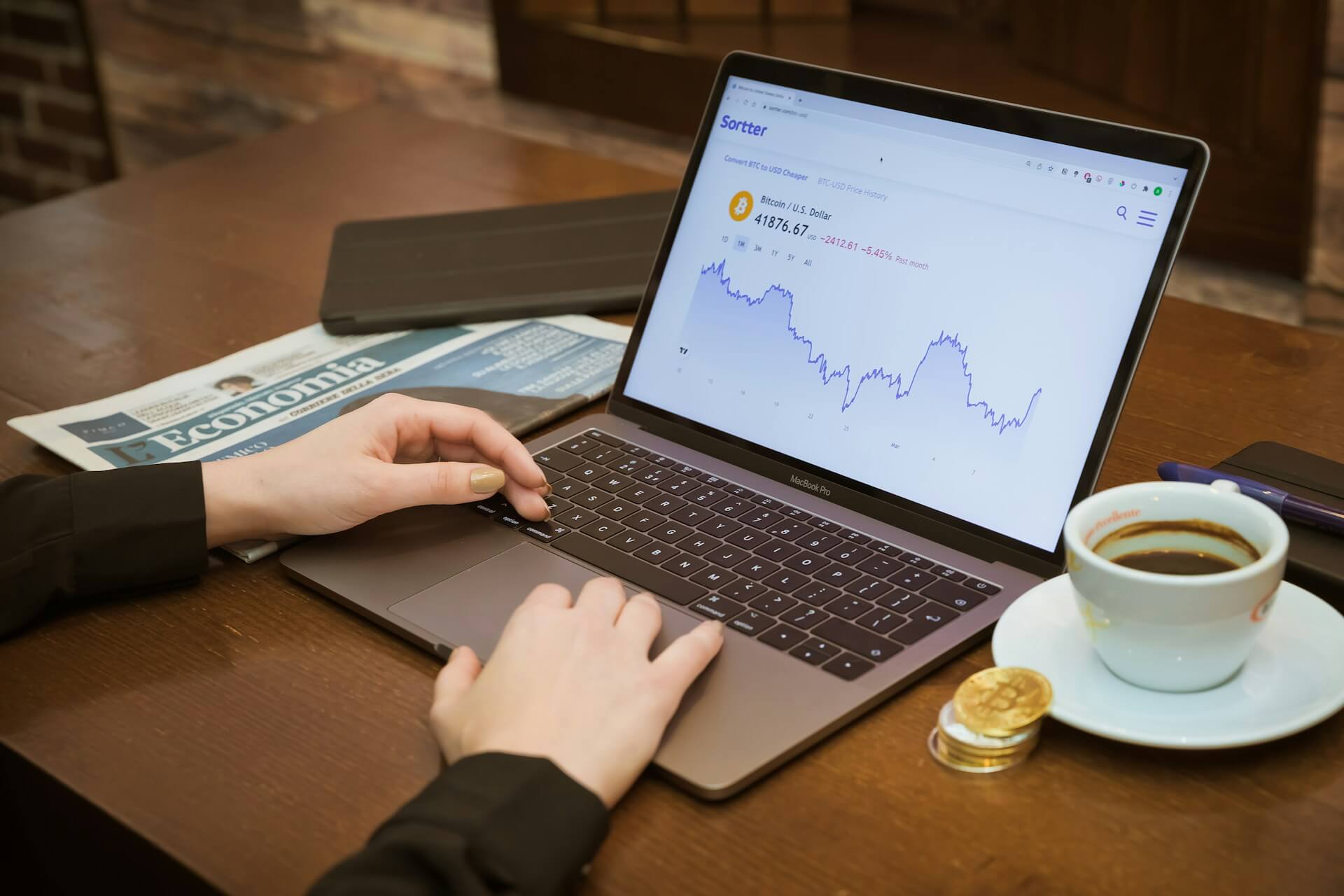Investment
5
min read
Active vs. passive investing: Key differences explained

Brandon Lawler
September 3, 2025

Active vs. passive investing: Key differences explained
In the complex and expansive world of investing, there are two common strategies investors use to grow their wealth: active investing and passive investing.
Active investing is where portfolio managers attempt to outperform market benchmarks. Passive investing is less involved and generally works to match the performance of a market index, such as the S&P 500 or Nasdaq.
Once you understand the differences between each option, you can tailor your strategy to meet your financial goals. Some investors opt for a fully active or passive investment strategy, while others combine the two. Certain investments, including mutual funds and exchange-traded funds (ETFs), can be passive or active. Whether you prefer to be hands-on or off, Gainbridge actively helps you choose the right strategy.
In this article, we’ll detail everything you need to know about active versus passive investing. Read on to explore each option, learn who manages the fund in passive investing, and weigh the pros and cons of each.
What is active investing?
Active investing is a hands-on approach where a manager or individual buys and sells securities, aiming to outperform benchmarks. Doing so requires effort in key areas:
- Research: Managers or individuals analyze economic trends and conduct qualitative and quantitative analysis to identify potentially promising investments.
- Market timing: This involves choosing the right time to buy or sell investments based on performance and market movements.
- Portfolio rebalancing: Managers regularly adjust holdings to adapt to market developments and keep your portfolio in line with your investment goals.
What is passive investing?
Passive investing employs a buy-and-hold strategy that typically tracks an index or market segment. This strategy offers three main benefits:
- Minimal trading: With a focus on index funds that can offer exposure to a range of securities, there may be less need to trade different assets. When trades are needed, it's typically to rebalance the portfolio or stay in alignment with the tracked index.
- Low fees: With less management involved, passive strategies generally have lower costs than active funds.
- Reliance on market returns: Returns depend on the performance of the chosen index, so investors experience both the upside and downside of the market.
For investors prioritizing simplicity and cost-efficiency, another option to consider is buying an annuity, which embodies the ethos of passive investing. For example, Gainbridge’s fixed-index annuities offer growth potential tied to a market index, with the added benefit of protecting your principal when markets decline.
Active vs. passive funds
Here’s a breakdown of how active funds compare to passive funds.
Objectives
Active funds intend to generate returns exceeding those of a benchmark index like the S&P 500 by capitalizing on market inefficiencies and investing in assets expected to yield above-average returns. Managers may look for undervalued stocks or emerging sectors that aren’t included in broad indices.
Passive funds focus on replicating the performance of an index, offering yields in line with the broader market. They do this by holding all or a sample of securities in the index, saving investors from the hassle of having to choose individual stocks.
Fee structures
With more involvement from managers or analysts, active strategies tend to have higher fees. The average expense ratio (management fee) for active funds ranges from 0.5% to 1.5%.
Index providers and fund issuers oversee passive funds instead of portfolio pickers. So expense ratios are lower, typically ranging from 0.03% to 0.3%.
Turnover rates
Active funds have higher turnover rates since managers often buy and sell securities aiming to improve performance potential.
Passive funds only make trades when necessary to maintain alignment with the underlying index. This can result in fewer trades and lower costs.
{{inline-cta}}
Active vs. passive investing: Pros and cons
Here are some of the benefits and drawbacks to consider when deciding between active and passive investment strategies.
Pros of active investing
There are some strategic advantages to active investing if you can tolerate risk:
- Potential outperformance: Active investing aims to outperform the market, potentially delivering higher returns when market conditions are favorable.
- Flexibility: Active managers can more easily respond to changing market conditions and emerging opportunities in real time.
- Risk management: Employing strategies like hedging or selling riskier assets can help active managers protect a portfolio during times of market volatility and underperformance.
Cons of active investing
Despite the benefits, here are some key reasons why active investing won’t be for everyone:
- Higher fees: Expense ratios tend to be higher due to the research and trading frequency involved.
- Manager risk: A manager's skill directly affects a fund's performance. Not all managers are created equal, and poor decision-making can lead to suboptimal returns or failure to meet key objectives.
- Potential underperformance: There are no guarantees in investing. Data shows that many active funds fail to consistently outperform benchmarks over time.
Pros of passive investing
Here are some of the main benefits associated with passive investing:
- Low cost: From conducting fewer trades to lower overhead costs, passive investing is typically more cost-efficient, allowing you to keep a larger percentage of the returns.
- Transparency: The securities included in an index are always clearly outlined, letting you know exactly what you’re investing in.
- Tax efficiency: Lower turnover rates can mean fewer taxable events, increasing potential tax efficiency.
- Diversification: Passive funds that track market indices can offer immediate diversification without the legwork involved in researching different investments and companies.
Cons of passive investing
While typically efficient and stable, there are downsides to passive investing:
- No market beating potential: Passive funds are designed to match market performance — not exceed it. So investors may miss the chance to capitalize on outperforming stocks, fast-growing sectors, and emerging trends.
- Full market downside: Full exposure to market upside comes with equal vulnerability to losses. Unlike active investments, fund managers lack flexibility to reduce high-risk assets, leaving little-to-no options to protect against losses.
- Limited customization: Since passive funds track a market index, you typically have few opportunities to tailor holdings for personal preferences.
Which strategy is right for you?
When comparing active and passive funds, the right choice for you depends on your unique financial situation and investment objectives. Here are key factors to consider.
Risk tolerance
Consider how comfortable you are with risk in investing. Active investing can be more suitable for those willing to accept greater risk in the pursuit of higher rewards, while also recognizing the potential for big losses. If you prefer potentially lower risk and steady returns in line with market growth, passive investing can be the better option.
Time horizon
Your investment timeline is a key factor to consider. Passive investing typically makes sense on a long-term basis, such as saving for retirement, as it leverages the market’s historical tendency to climb over time. For investors seeking higher potential returns sooner, active investing may be better suited, but it comes with increased risk.
Cost sensitivity
Passive investing typically involves lower costs, so it can be appealing if you’re looking to minimize fees. For those looking for the guidance of skilled managers or the ability to trade in and out of promising opportunities, active funds may be a better fit.
Your strategy doesn’t need to be all-or-nothing. Many investors combine both passive and active investing in their portfolios. To explore your options further, connect with Gainbridge and find an approach that aligns with your personal goals and values.
Explore opportunities with Gainbridge
Any investment carries advantages and disadvantages, so it's important to understand your choices and goals before making a decision. If you are looking for a safe, reliable option with consistent growth potential, explore Gainbridge’s annuity options today. With no hidden fees and an easy-to-use platform,
Gainbridge is here to guide your wealth-building journey.
This article is for informational purposes only. It is not intended to provide, and should not be interpreted as, individualized investment, legal, or tax advice. For advice concerning your own situation please contact the appropriate professional. The Gainbridge® digital platform provides informational and educational resources intended only for self-directed purposes. Investing involves risk, including loss of principal and past performance does not guarantee future results.
Maximize your financial potential
with Gainbridge
Start saving with Gainbridge’s innovative, fee-free platform. Skip the middleman and access annuities directly from the insurance carrier. With our competitive APY rates and tax-deferred accounts, you’ll grow your money faster than ever.
Learn how annuities can contribute to your savings.

Individual licensed agents associated with Gainbridge® are available to provide customer assistance related to the application process and provide factual information on the annuity contracts, but in keeping with the self-directed nature of the Gainbridge® Digital Platform, the Gainbridge® agents will not provide insurance or investment advice

Explore different terms and rates
See how your money can grow with Gainbridge
Try our growth calculator to see your fixed return before you invest.






















